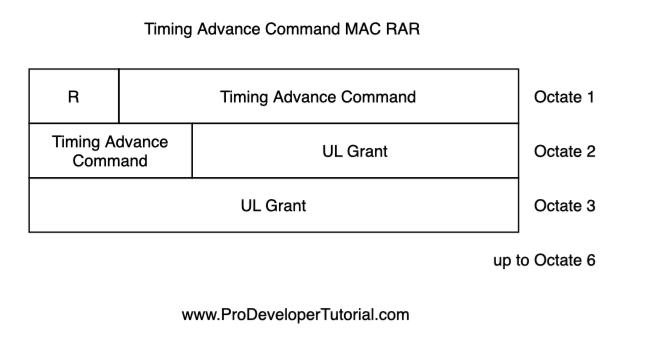What is the need of timing Advance command?
UE will not be in stationary position. It will be moving far away or moving near with respect to eNB.
The difference in the distance will reflect in UL transmission time.
Because of this, eNB will face interference and downlink and uplink subframes are not synchronized.
How to solve this?
To solve this interference, eNB will send UE to either advance or delay the UpLink (UL) transmission.
This can be periodic or per need basis. With a granularity of 16Ts.
UE will receive Timing Advance either in MAC CE or in RAR during rach procedure.
Timing Advance in MAC CE
As you can see above, Timing Advance will take 6 bits in MAC CE. It will vary from 0 to 63.
The New Timing Advanced (NTA) can be calculated as below:
NTAnew = NTAold + (Ta – 31) * 16
Timing Advance in MAC RAR

As you can see above, Timing Advance will take 11 bits in MAC RAR. It will vary from 0 to 1282.
The New Timing Advanced (NTA) can be calculated as below:
Nta = Ta * 16.
If TA = 1
NTA = 16Ts => 16/30720000 sec => 0.5208 micro seconds.
what happens if a Timing Advance command is received?
If UE receives Timing Advance command, either in MAC CE or in MAC RAR and if time alignment timer is not running then
> UE will apply Timing Advance command
> start or restart the time alignment timer.
Reference 3GPP 36.213

